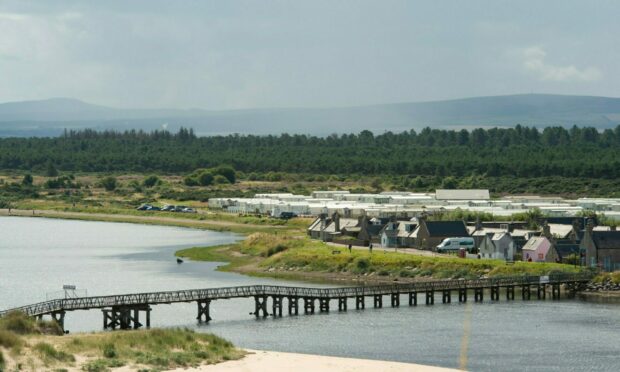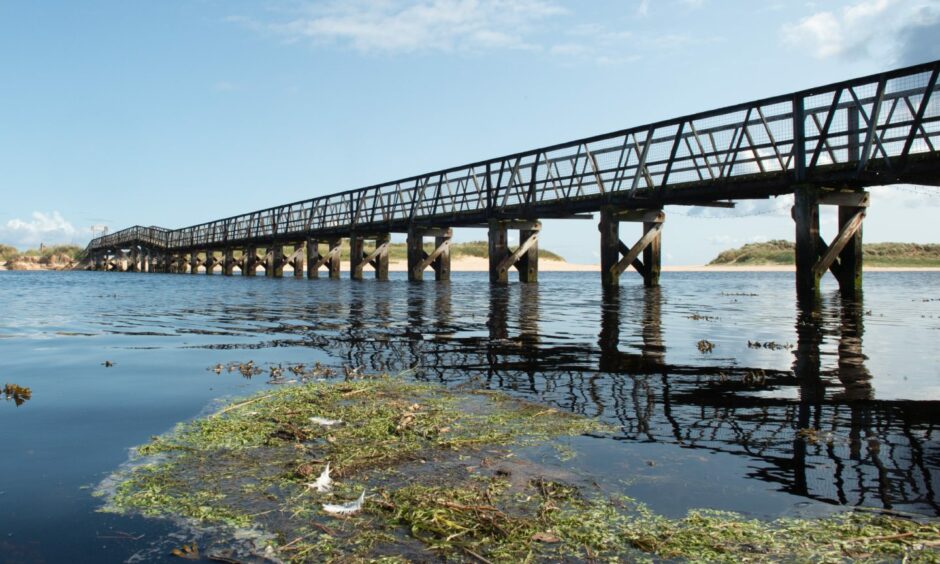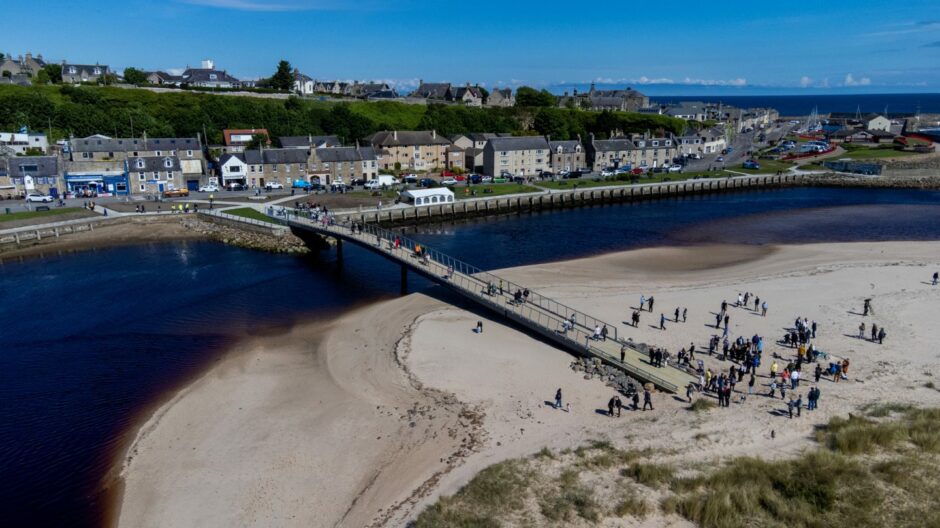Demolition work on the much-loved old East Beach bridge in Lossiemouth is to begin next week – just days after the new crossing was opened.
The wooden structure has stood at the mouth of the River Lossie for more than a century.
Generations of beach-goers and dog walkers have made their way across the narrow span to enjoy the golden sands.
Old Lossiemouth bridge to be ‘recycled’
However, after 106 years of foot traffic it eventually buckled under the weight of people in July 2019.
Locals in Lossiemouth had hoped the old bridge would be preserved in some way as part of the project for the new crossing.
Rab Forbes, chairman of Lossiemouth Community Development Trust’s bridge committee, hopes the modern structure will find a similar place in the town’s heart.
He said: “This town loved the old bridge, and I’m hoping one day they’ll love the new bridge as much.”
Contractors Beaver Bridges, who built the replacement bridge, have now confirmed work will begin on dismantling the much-loved wooden bridge within days.
At the opening ceremony, Pete Dalzell, managing director of Beaver Bridges, praised the Moray community for welcoming the workers over recent months.
He said: “Most importantly, most importantly, all you people of Lossiemouth who welcomed my team so wholeheartedly into the community.
I’m afraid you haven’t got rid of us just yet because, I think it’s next week, we’re going to come back and dismantle and recycle in a sustainable way the old bridge.”
History of old Lossiemouth bridge
The old East Beach bridge was first built in 1913 and actually stood where the new bridge is now, spanning the river from the Esplanade.
However, the crossing was deemed too low for fishing boats and was dismantled and moved to its current location in 1918.
When Elgin Harbour Board, who built the bridge, folded the bridge was surveyed by the Lossiemouth Town Council.
It was assumed the crossing had passed into public ownership, but it was later confirmed it had not been and the Crown Estate declined to take ownership of it.
The predicament meant that despite its landmark and vital position in Lossiemouth, the bridge was legally ownerless, which contributed to its deteriorating condition.


